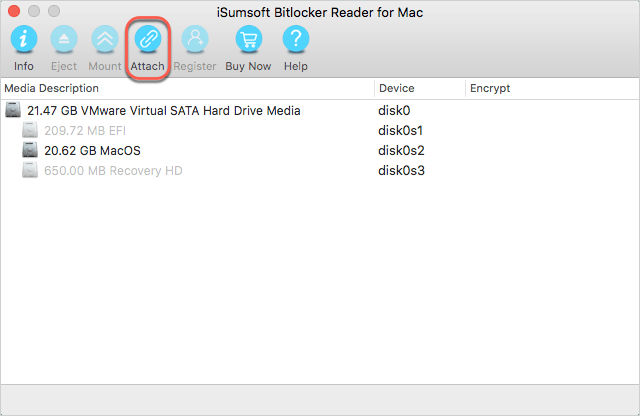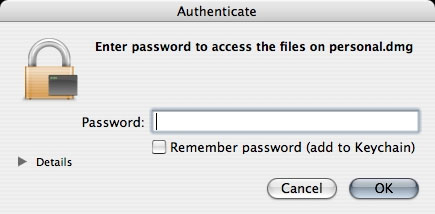Overview
Among many other formats, it can test.dmg's as well. Note that JtR does not 'break' the encryption, it just automates and speeds the process of trying thousands (or millions, or trillions) of dictionary-based and random passwords in hopes of eventually hitting the correct one that decrypts your data.
The Disk Copy or Disk Utility feature for macOS can be used to create an encrypted disk image. Encryption means it requires a password to open or become available (to 'mount'). An encrypted disk image acts as secure storage space and can be used like any other disk image file. It may be copied to or created on network volumes or removable media, including Zip drives, USB flash media, or FireWire hard drives. Each encrypted disk image is protected by a password. The following document explains how to create, mount, and unmount an encrypted disk image.
Important: If you forget the password to your encrypted disk image, the data on that disk image cannot be recovered.
Getting Started

- You can use hdiutil to mount a disk image that is protected with a passphrase. Hdiutil attach -agentpass /path/to/image.dmg That should attempt to mount the disk image, prompting you for the passphrase. If it's encrypted with a public key, you can pass that using option -pubkey.
- Encrypted Dmg File To Ipsw 10; Feb 05, 2019 The ipsw archive contains encrypted DMG Apple disk images with iOS system installation, updates and fixes. DMG images and settings files can be extracted from.ipsw file by compression utilities that support ZIP compression file format. Only rename ipsw file extension to ZIP.
- There is zero chance I am entering the wrong password, and it is being rejected on all three dmg images. Thank you for any input! Nov 23, 2009 When selecting to create the image (encrypted or not) disk utility ask for a password to allow authopen to make changes. After that it gives the error: unable to create image.dmg. No space left on device.
- Mac Os 10.7.0 Dmg Download Yosemite Dmg File Download Dmg Program Disk Image.dmg Does Not Ask For Password When Encrypted Jb Industries Dmg-5 App Cleaner Mac Torrent Mac Virus Cleaner Microsoft Office 2008 For Mac Download How To.
Files can be moved to or from an encrypted disk image as easily as you can from a non-encrypted disk image. Please be aware of the following when using an encrypted disk image:
- Backup programs will need to back up the entire image if any files within it have changed, since the image appears as a single file.
- There is no way to change the password on an image file.
- An encrypted disk image cannot be used as your home directory.
Complete the following steps to create an encrypted disk image for your version of macOS v. 10.4 or greater.

MacOS

- Click Go, Applications, Utilities, and then click to open Disk Utility.
Note: You can also click the New Image button and go to Creating a New Blank Image section. - Choose File, then New, then Blank Disk Image.
- A New BlankImage window will display.
- Enter a name in the Save As field. This name is used for the disk image (.dmg) file.
- Enter a name in the Name field. This name displays when the disk image file is opened (mounted).
- Select the Size of the image file from the drop-down menu.
- Choose the Encryption option 128-bit AES to encrypt the image.
- Select the volume Image Format from the drop-down menu. The default “read/write” option is recommended. Click the Create button.
- Enter and verify a secure password when prompted and click OK.
Note: Ensure the box next to Remember password (add to keychain) is unchecked. This ensures that no one will be able to determine the password for your encrypted drive by checking your keychain.
Mounting and Unmounting Encrypted Disk Images
- After the encrypted disk image has been created, it will automatically mount for the first time and files can be copied to this location. The named volume disk image will display above the mounted source file.
- When you are finished using the encrypted disk image, you must unmount the image. Drag its icon to the trash or select the eject button next to its icon in any finder window. In the example below, the encrypted disk image is named “personal.'
- To mount the image again, simply double-click on the disk image you created. In the image below, the disk image is named personal.dmg. You will see it at the top of the list.
- Enter your password when prompted. Click OK. Your disk image should be mounted.
Note: Always remember to unmount your disk image when you are finished with it.
Disk Image .dmg Does Not Ask For Password When Encrypted File
Universal Disk Image Format (UDIF) is the native disk image format for Mac OS X. Disk images in this format typically have a .dmg extension.You can create DMG from a specific folder with all files represented in it. Later this DMG can be transferred, shared with other persons.By adding AES-256 key password to your image, you have a crypto container with a flat-file system in it. It can be mounted once there is a need in files located on the image and unmounted at any time.More than that you can safely send it by a public network to persons that will interact with the same file structures, the main thing is safely providing the password that will be used for container decryption.Here are the basic operations on the MAC OS to create DMG attach it work and unmount.